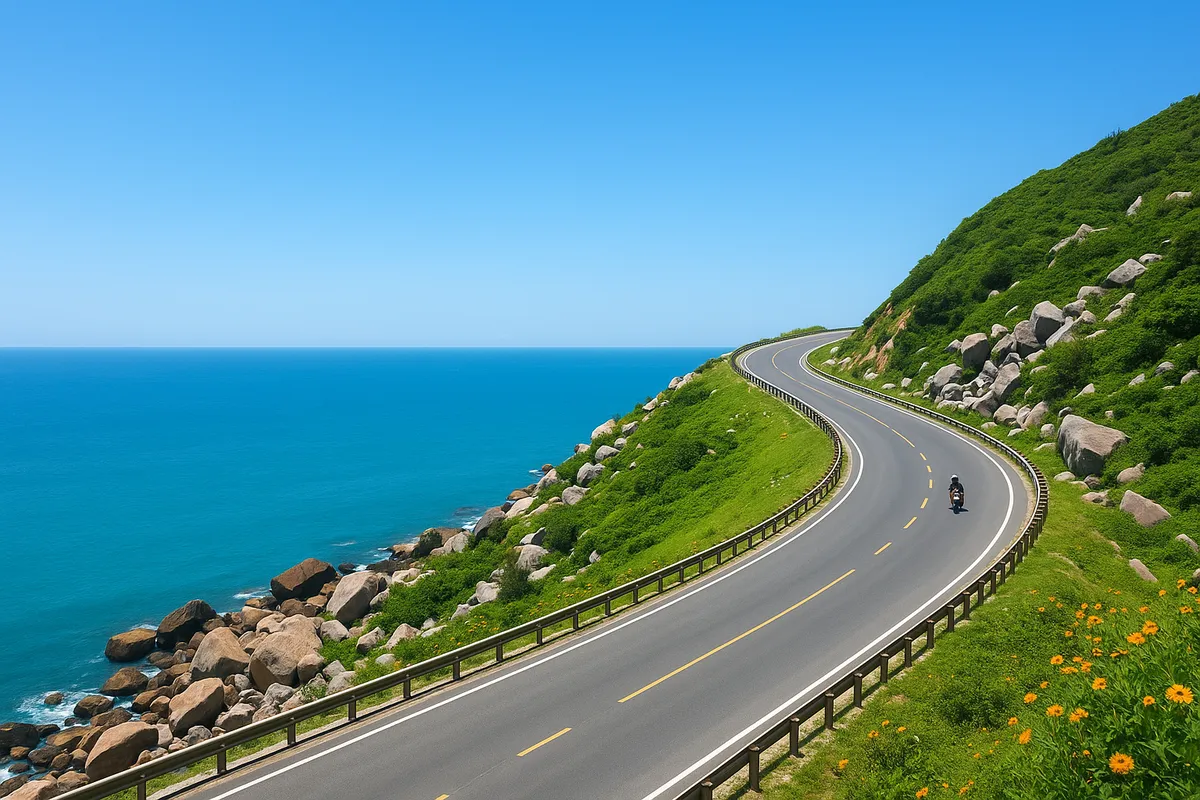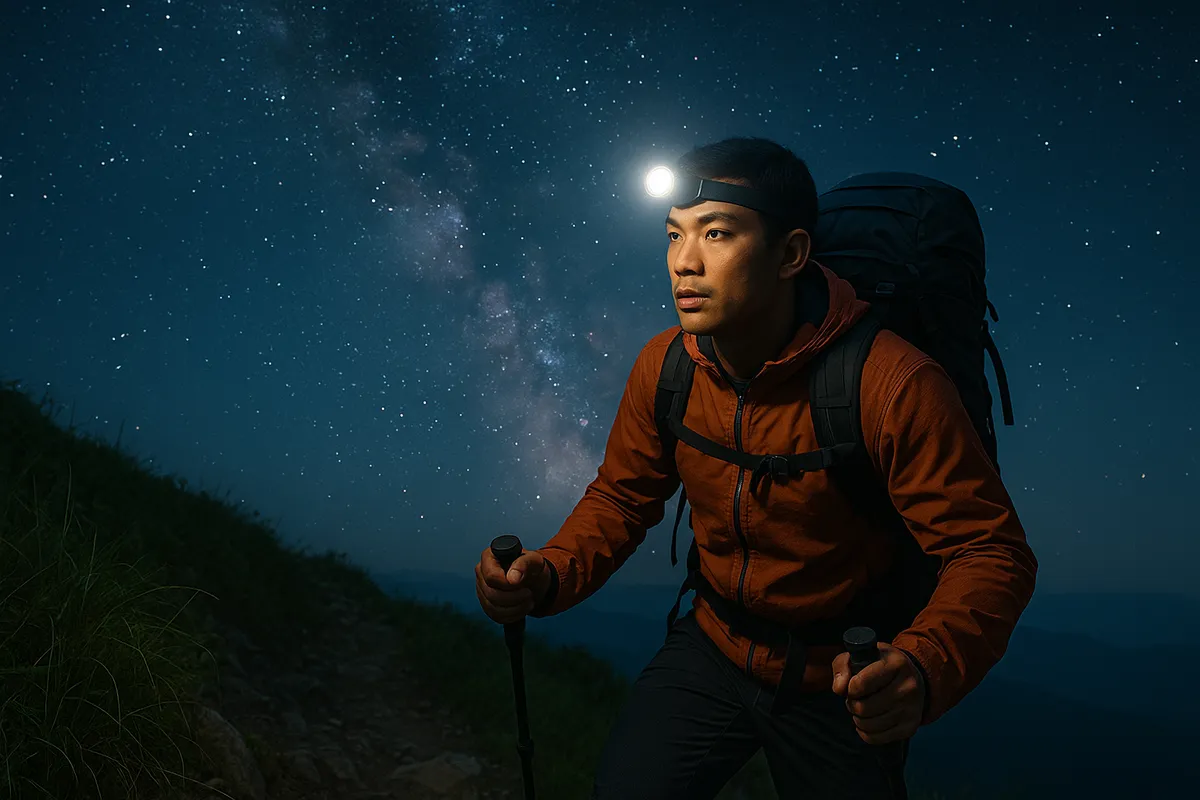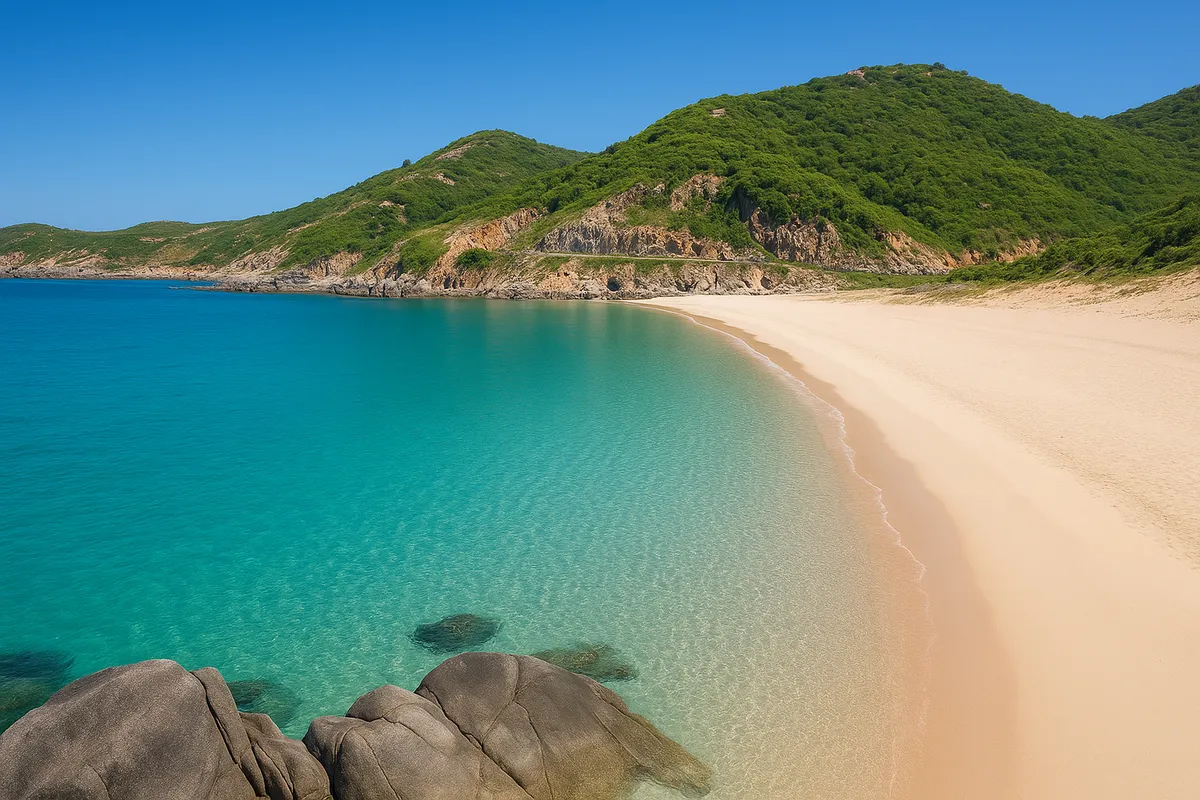Captivating coastal roads for check-in
- Sunday, May 04, 2025, 15:17 (GMT+7)
Captivating coastal roads for check-in
As the first sunlight kisses the sea's horizon, a breathtaking visual journey begins, unfolding along the S-shaped stretch of Vietnam like a travel film bathed in golden light and filled with dreamlike frames. Few people know that Vietnam holds some of the most stunning coastal routes in the world, where every curve is a work of art and every photo feels like it belongs in a gallery. Here, sunlight reflects on the water like a golden ribbon, each turn becomes a potential frame worth a million likes, and the wind, the clouds, and the road blend into the purest form of freedom.
It all begins in the breezy land of Loc Ha in Ha Tinh, where Thien Cam Beach rises like an ancient song echoing over the ocean. The coastal road curves along soft white sand, passing rows of deep green casuarina trees and sleepy fishing villages resting after the stormy season. Every morning, sunlight pours like honey onto the sea, casting a warm golden tone over the landscape, ideal for the first chapter of a photo album that breathes the rhythm of slow living. Few know the ancient tale passed down here about a sacred school of fish that guided locals through storms. To this day, no one sails when the moon is full, a mystical tradition still alive in this coastal culture.
Leaving Ha Tinh behind, Highway 1 takes you to Quang Binh and its tender Nhat Le Beach, soft and cinematic like a French summer frame. But for a truly iconic check-in, photographers head to the stretch between Bao Ninh Beach and the Hac Hai lagoon, where morning light meets the fading mist of the night before. The colors here are unmistakable, a blend of silver and diluted jade, with traditional round boats resting in the light of dawn. A caption once shared across thousands of photography pages reads, “Sometimes you just stand still by the sea and let the wind tell the rest of the story.”
Heading south, the coastal route from Quang Tri to Thua Thien Hue appears like a watercolor painting. Phuoc Tuong and Phu Gia passes, though lesser known, are worshipped by photographers during summer. From the top, you can see the vast Tam Giang Lagoon painted gold by the sun, with tiny boats floating like brushstrokes across a glassy surface. If you are chasing sunset shots, come around 4:30 PM with a wide lens. The orange light starts to soften and the clouds move in layered waves. The moment lasts no more than 20 minutes but could become the best photo of your life.
Between Hue and Da Nang lies Hai Van Pass, one of the most iconic coastal roads in Vietnam. Photographers call it the place where time stops. Everything here feels untouched, serene, and raw, as if the modern world forgot to arrive. From the top of the pass, Lang Co Bay spreads out below, where sea and sky melt together and clouds drift slowly across your face like an invitation into another world.
The journey continues along the coastal stretch from Son Tra Peninsula to the end of Non Nuoc Beach in Da Nang. Along Vo Nguyen Giap Street, coconut palms sway in the breeze, white sand glows under the sun, and the sea shimmers clear as glass. Every shot looks like it has a natural filter. A low angle shot from the sand around 7 AM often creates a glowing dreamlike effect, a secret trick loved by lookbook photographers. If you are lucky, you might catch a faint view of the Dragon Bridge in the distance, a modern slice in a dreamy setting.
In central Vietnam, Phu Yen's coastal road looks like a reel from a film too beautiful to be real. From Ganh Da Dia with its volcanic rock columns stacked like ancient hands, to the wooden bridge crossing O Loan Lagoon, every location feels like a check-in dream come true. The summer light in Phu Yen leans golden, never harsh, always cinematic. The most famous photo ever taken here shows a girl in a white traditional dress standing alone on the wooden bridge at sunrise, once praised by an international magazine as the most serene frame in Southeast Asia.
Further down is Ninh Thuan, a paradise made for the camera. Imagine white sand dunes like a local Sahara, the Vinh Hy coastal road hugging the cliffs, and tranquil coves so peaceful you might forget to take a photo and just sit in silence. What stands out here is the vibrant contrast of blue skies, turquoise water, and rich red earth. For those chasing dreamy tones, try a warm vintage filter and shoot backlit around 5 PM. The result feels like a memory pulled straight from an old postcard in the 1990s.
In Khanh Hoa, the road from Doc Let to Dai Lanh and Van Ninh winds like a curve carved between mountains and sea. One side offers steep cliffs, the other opens to endless blue. Many riders stop at the sixth curve, where a rock ledge juts out into the ocean. It is the exact spot where the viral photo titled "Alone between sky and sea" was taken. Standing there, wind behind you and ocean ahead, the camera shaking with each wave feels like being returned to your purest self.
The final stop in this coastal photo journey is the southern island of Phu Quoc. From Ham Ninh to Sao Beach, from Ganh Dau Cape to Truong Beach, everywhere is drenched in gentle sun and crystal sea. The light here is unique. It is clear and deep without glare, bringing out skin tones, water, and sky in honest but vivid colors. This is where young travelers come not to run away but to return to themselves. A caption that keeps appearing in travel albums about Phu Quoc says, “Some places do not need photos to be beautiful, but once captured, you cannot look away.”
From the silky sands of the north to the wind-brushed rocks of the central coast to the gem island in the south, every coastal road in Vietnam is more than a journey across a map. It is a journey through emotion and image. What makes it a paradise through the lens is not just nature's beauty but the truth in every feeling it brings. Every frame holds more than a scene. It holds memory, silence, and an invitation to live differently, slower, deeper, and more meaningfully.

 CHECKIN.VN
CHECKIN.VN








Share on